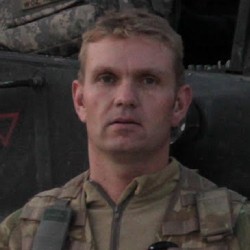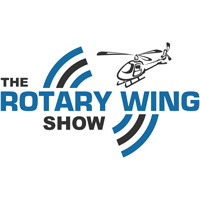Podcast: Play in new window | Download
Subscribe: RSS

As aircrew we spend a huge amount of time training for different circumstances and emergencies. Dealing with a burning flare in your cockpit fired from a wingman’s aircraft is not one of these circumstances!!
Add in the complications of being a few thousand feet in the air, over hostile controlled land and in a sealed Apache cockpit with your own personal weapon ammunition at risk of cooking off and you have a fun time ahead of you.
This is the situation Clive Richardson found himself in. Perhaps strangely enough his prior HUET experiences in the pool dunker kicked in to some degree.
Meanwhile in the front seat of the Apache, unable to see what is going on in the back other than a lot of smoke in the mirror and no comms (Clive’s intercom lead had become unplugged) and just after a large ‘bang’ , Clive’s co-pilot was trying to work out what the hell was happening.
10 Years ago today, marks the anniversary when I learned why you should always fly with your visor down.
Having a 2000 degree magnesium spectral flare smash into your face at the speed of a low velocity round, while over Helmand Province with no landing options will usually focus you mind.
After hitting my visor with such force I smashed my head off the opposite window the flare melted my chest rig before causing a fire in my navigation bag containing 150 rounds of ammunition. The fire persisted and filled the cockpit with black acrid smoke. I held my breath and was able to shake the still burning flare out of my nav bag to the floor. After burning my trousers and melting my boots it eventually burnt out. So glad the Apache was not equipped with a cockpit fire extinguisher…..but at least I had a visor! If you fly with a visor, use it! – Original LinkedIn Post



Podcast: Subscribe in iTunes | Play in new window | Download
Links from this week’s episode:
Support the podcast on Patreon
Clive flying the Apache for the Blue Eagles display team – YouTube



What was your biggest takeaway from this episode? Help yourself remember and share it with others by making a comment about it here below.


Was pretty interesting but the sound levels were up and down alot making the conversation hard to follow…
I appreciate the feedback Anthony. Sometimes it depends on the raw audio that I get after the recording. Other times its my poor editing but I’ll spend some more time on the next one to get a more even output.
Cheers!